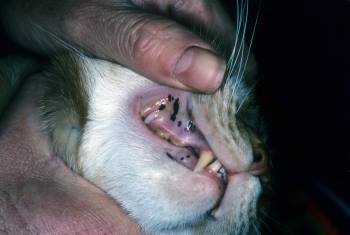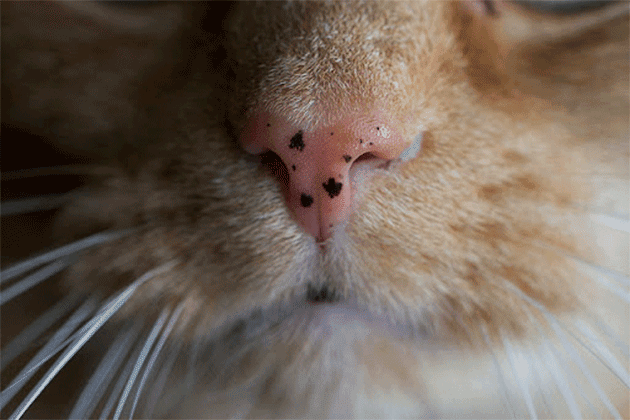
Lentigo in dogs and cats

The pigment melanin gives color to the skin and coat. However, there are situations when it becomes smaller or disappears completely, for example, as with vitiligo, which occurs in both cats and dogs, and in humans. But it also happens that melanin in certain areas, on the contrary, becomes more. Consider today such a condition as lentigo.
What is lentigo
These are small areas of hyperpigmentation on the animal’s body or mucous membranes. Lentigo is manifested by the formation of small, from a few millimeters, to larger, flat spots, from light brown to almost black. The spots do not protrude above the surface of the skin and do not itch. More often appears in cats older than a year of red, peach, cream color. The main localization in cats is the lips, tongue, eyelids, nose and ears. In mature dogs, lentigo can occur both on the mucous membranes and most often on the skin of the abdomen and groin. Pugs have a hereditary form of lentigo, which has an autosomal dominant pattern of inheritance. The causes of lentigo are not clear today. For some reason, melanin begins to be deposited focally in certain areas.
When to beat the alarm?
Usually this type of hyperpigmentation is only a cosmetic defect (and a highlight) of appearance, and treatment is not required. But the owner should pay attention to the condition of the spots, and consult a doctor in time if such signs are noticed:
- Itching
- Redness and inflammation
- Crusts, vesicles
- peeling spots
- Discharge from the spot
- The lesion protrudes above the surface of the skin
- Is sore to the touch
- Too much increase (greater than 10 cm) in spot sizes
This is an occasion to take your pet to the doctor. Since in this case, lentigo must be distinguished from melanoma of the skin and mucous membranes, viral plaques with papillomavirus, hyperpigmentation at the site of inflammation, acanthosis nigricans, demodicosis, cat acne, and other dermatological diseases. If, during a visual examination, the doctor has doubts about the nature of the stain, it will be necessary to conduct a diagnosis: skin scrapings, cytological examination. Summing up – lentigo is not scary, the main thing is to be attentive to the pet and distinguish it from skin diseases in time, in case of any doubt, contact the veterinary clinic.





